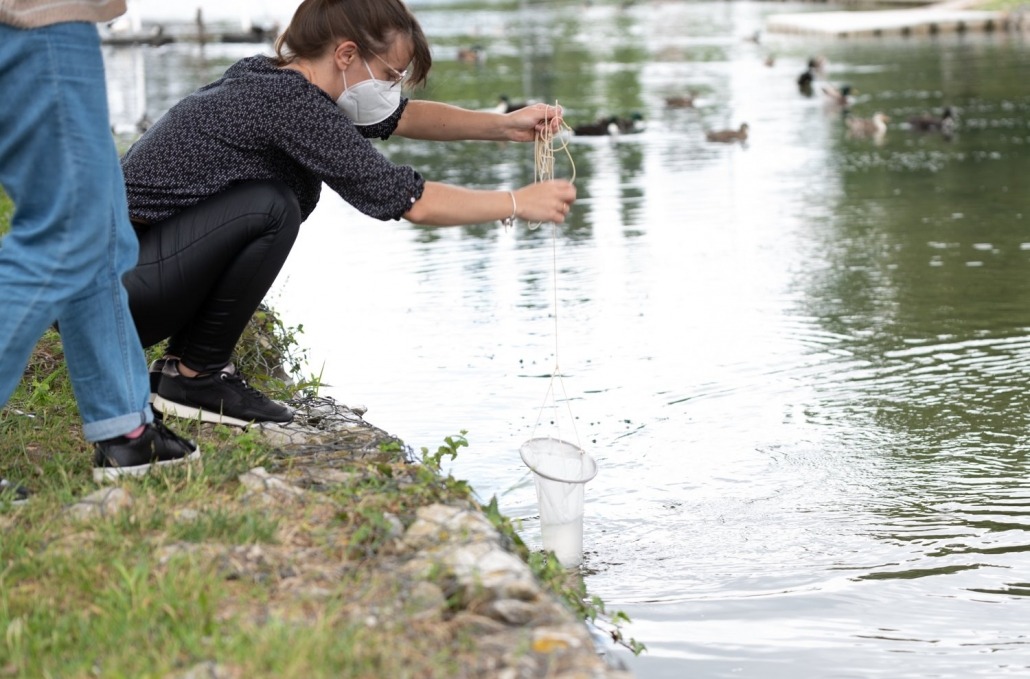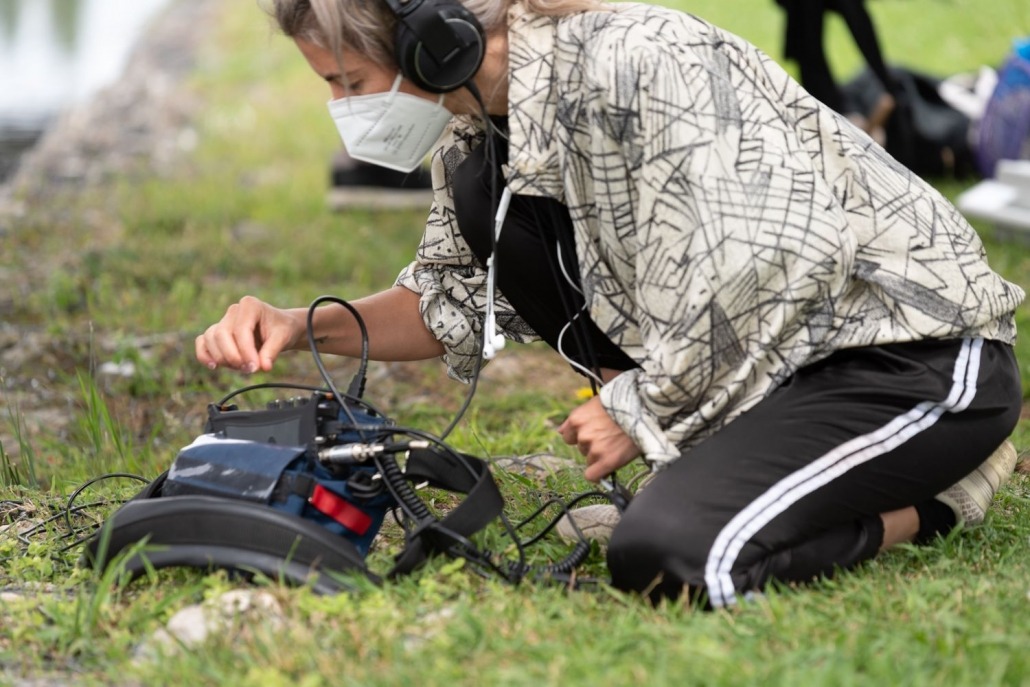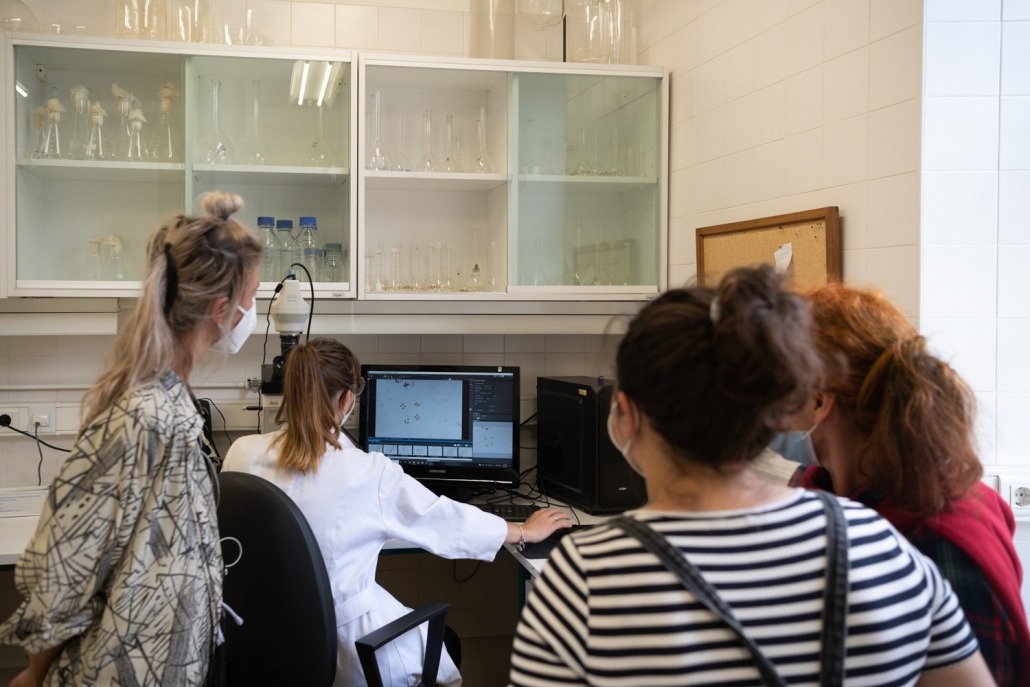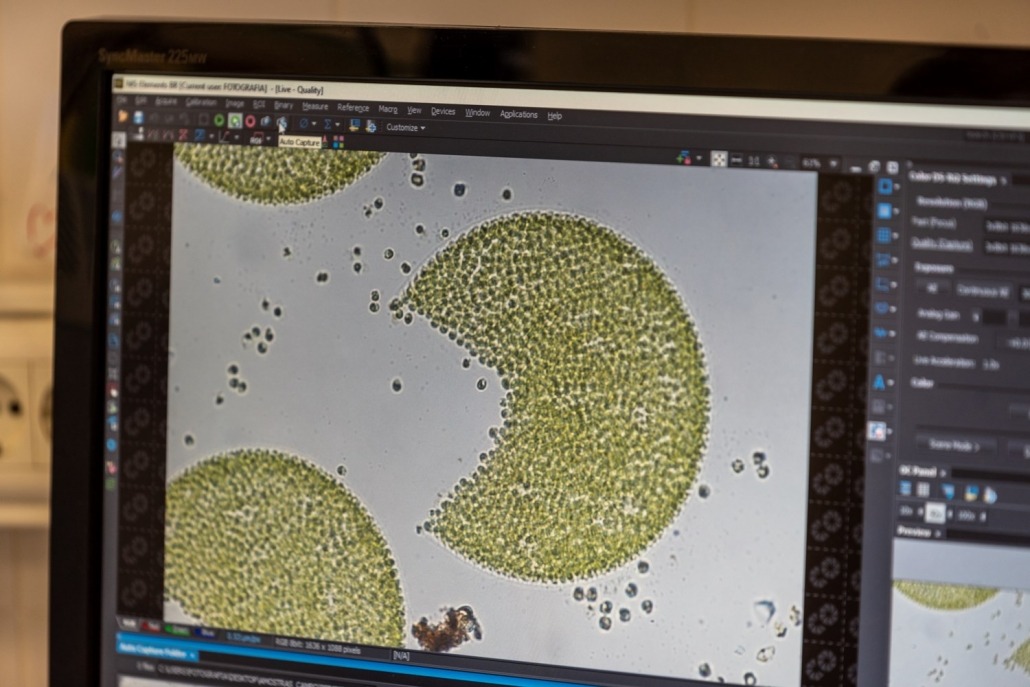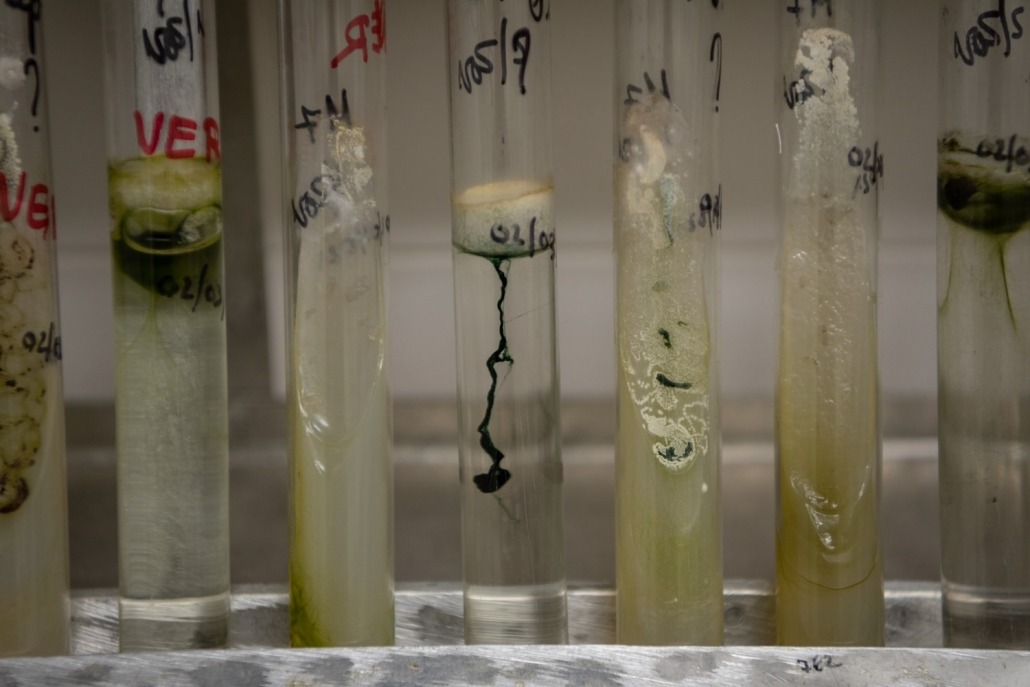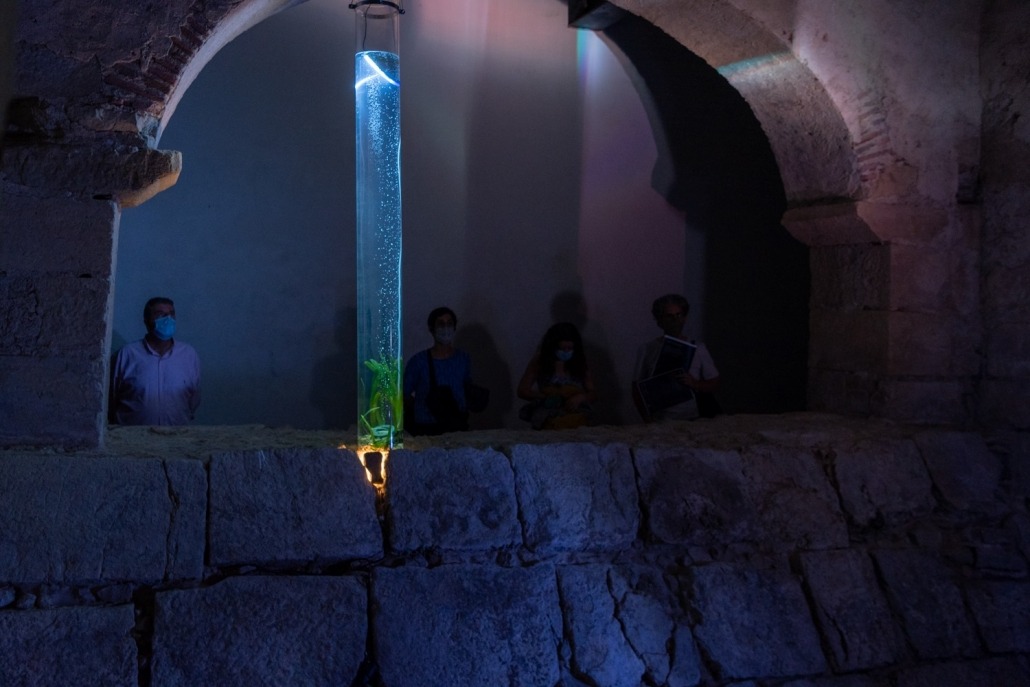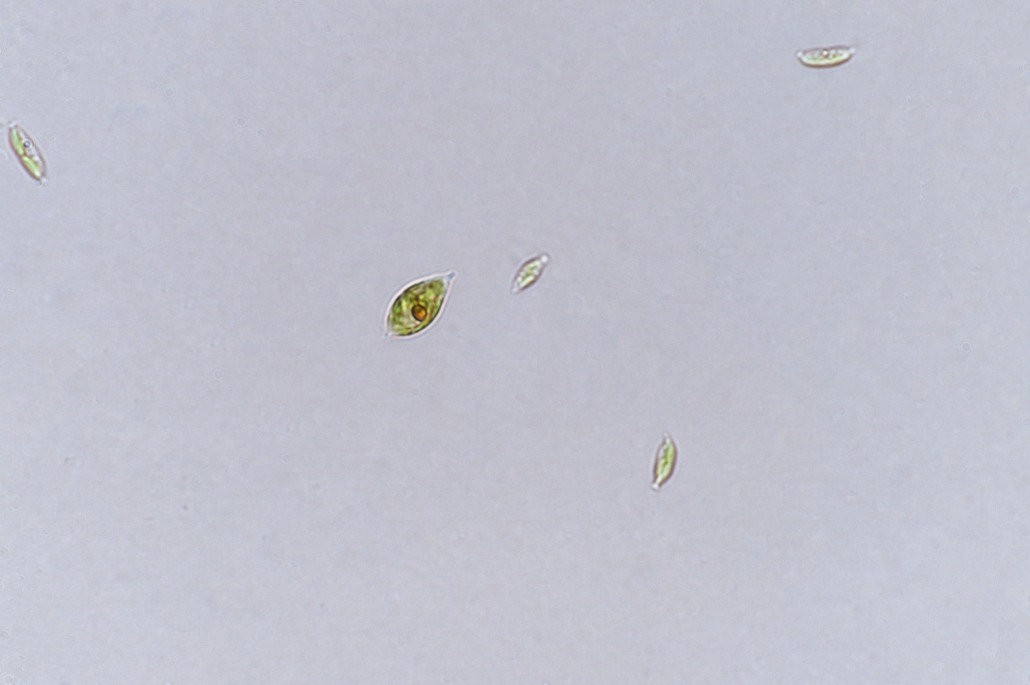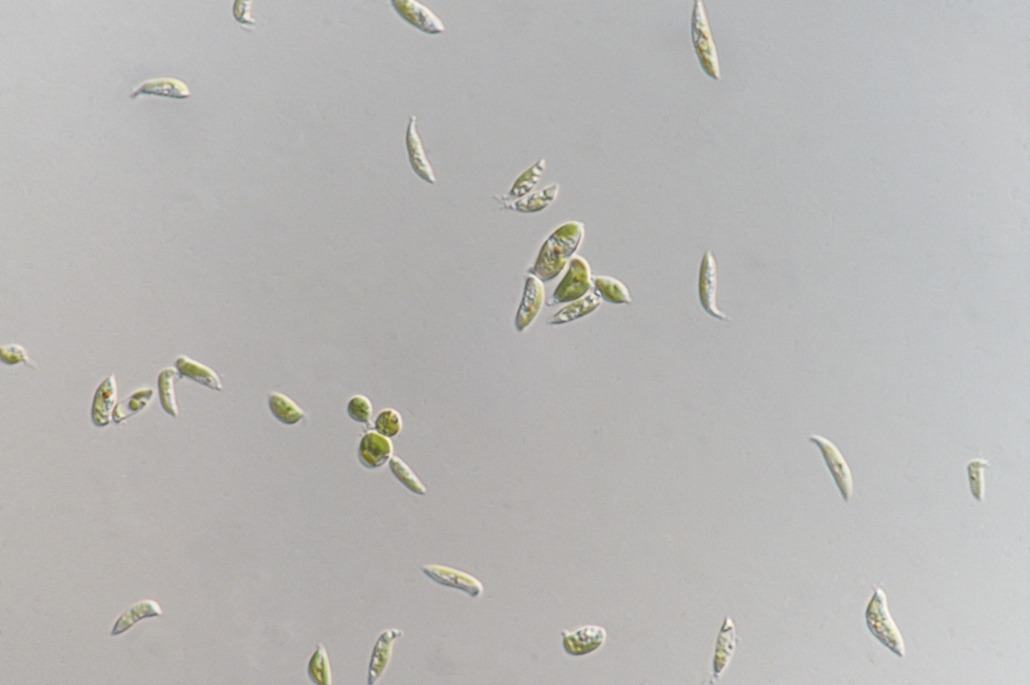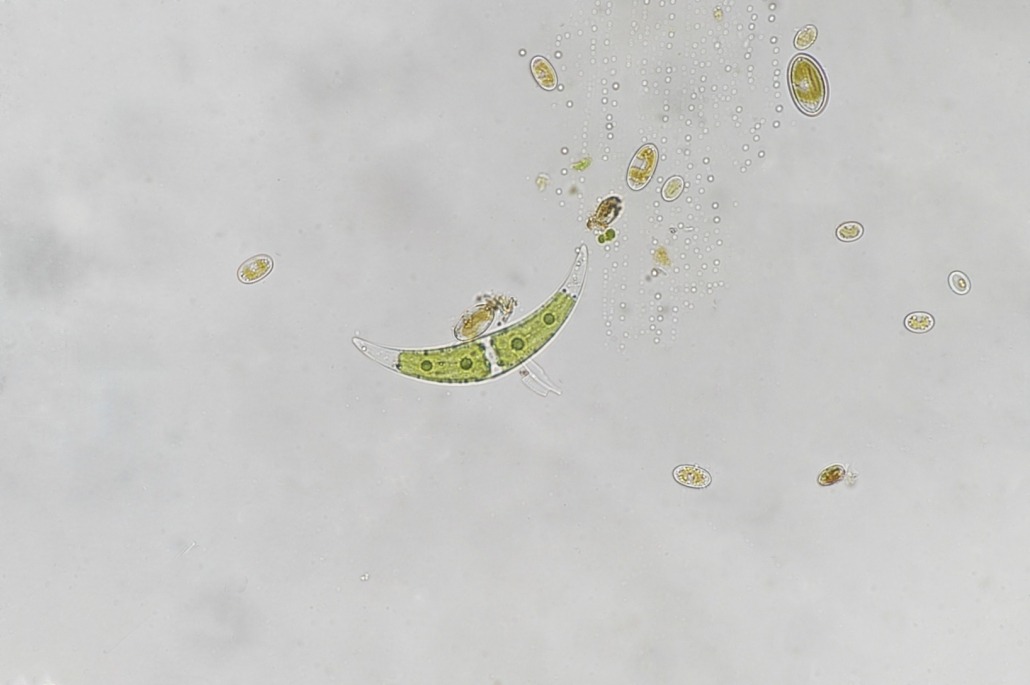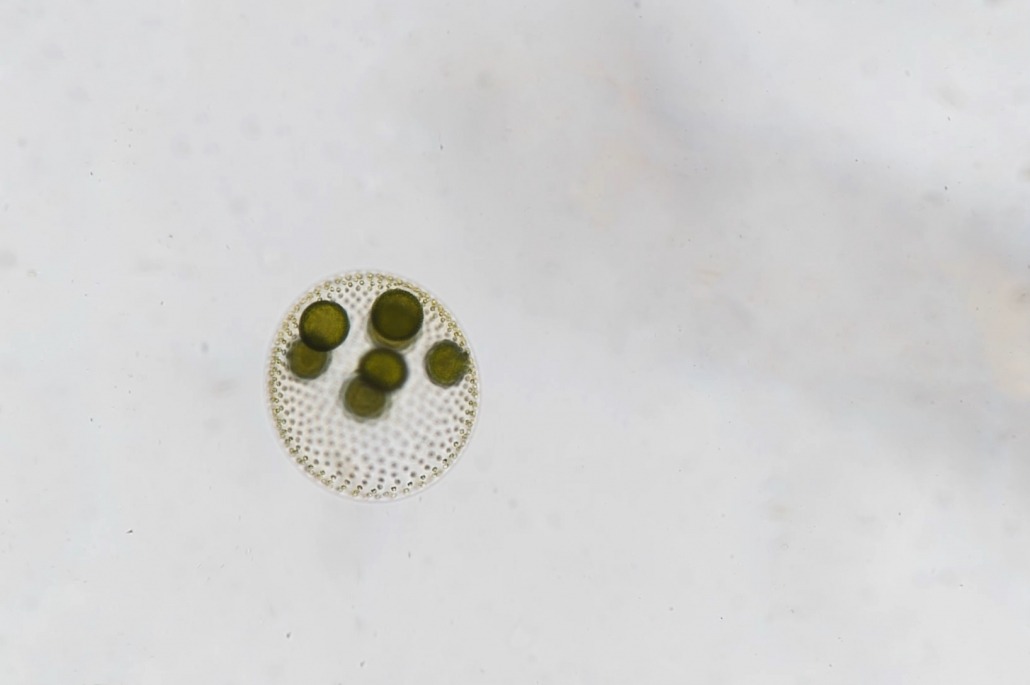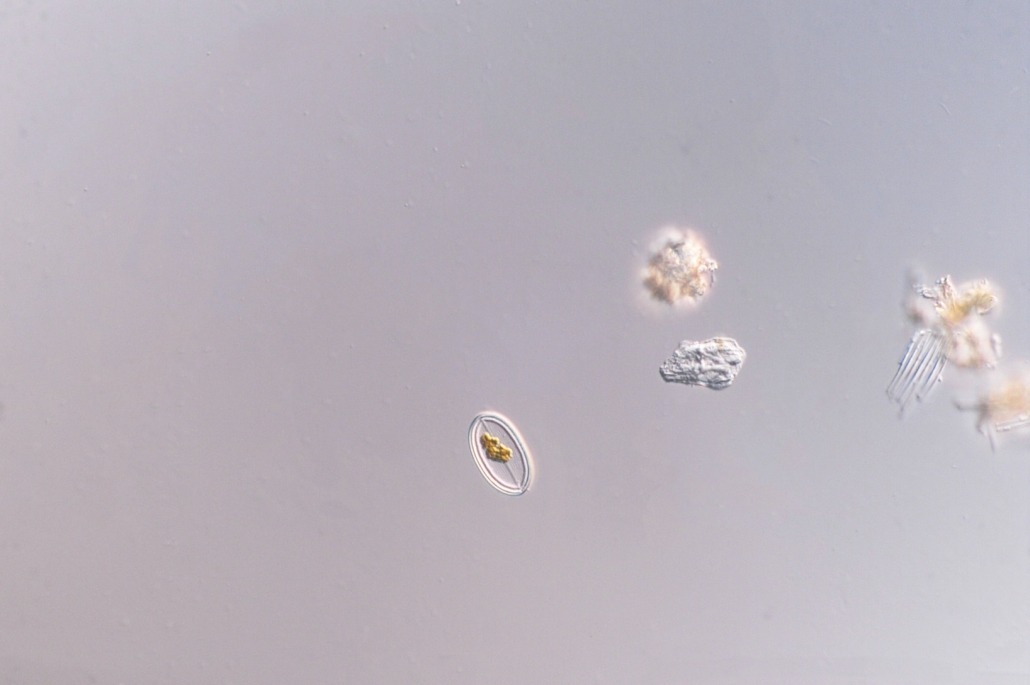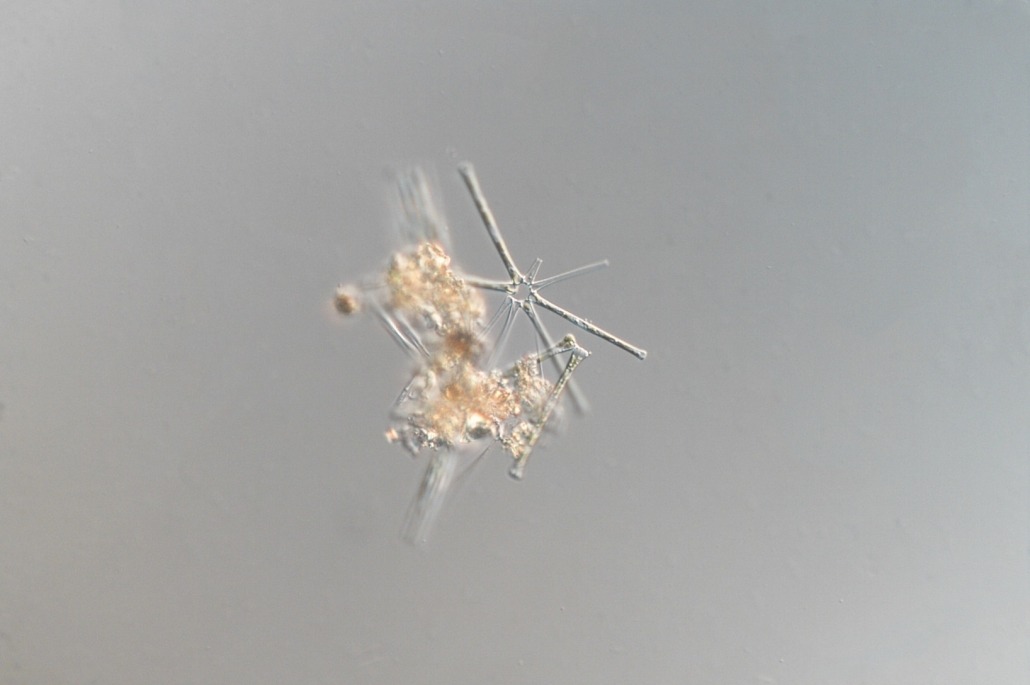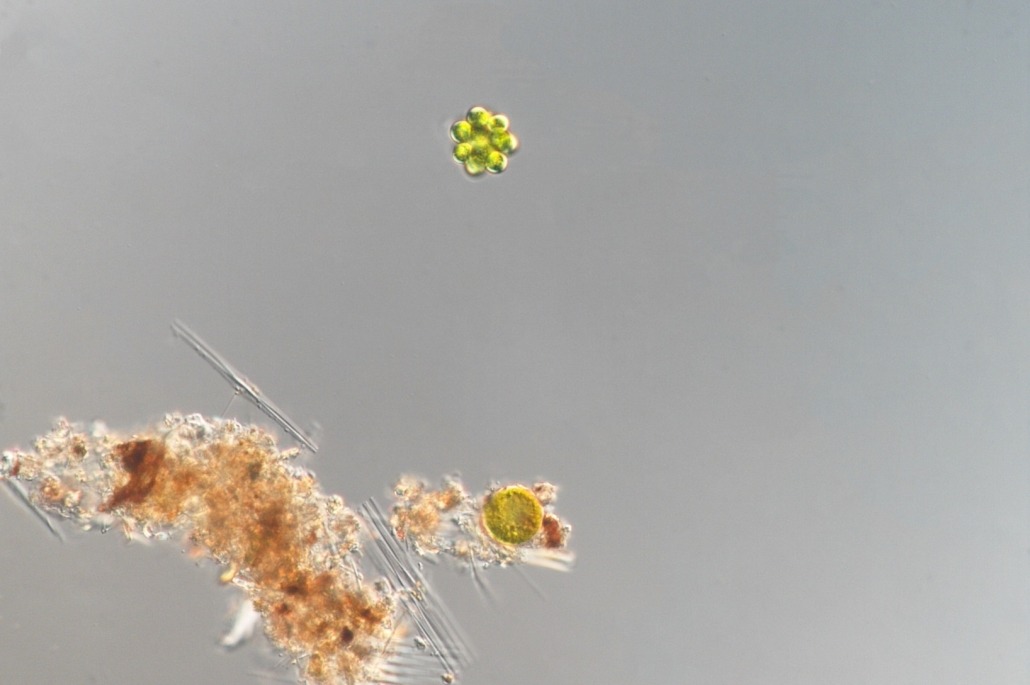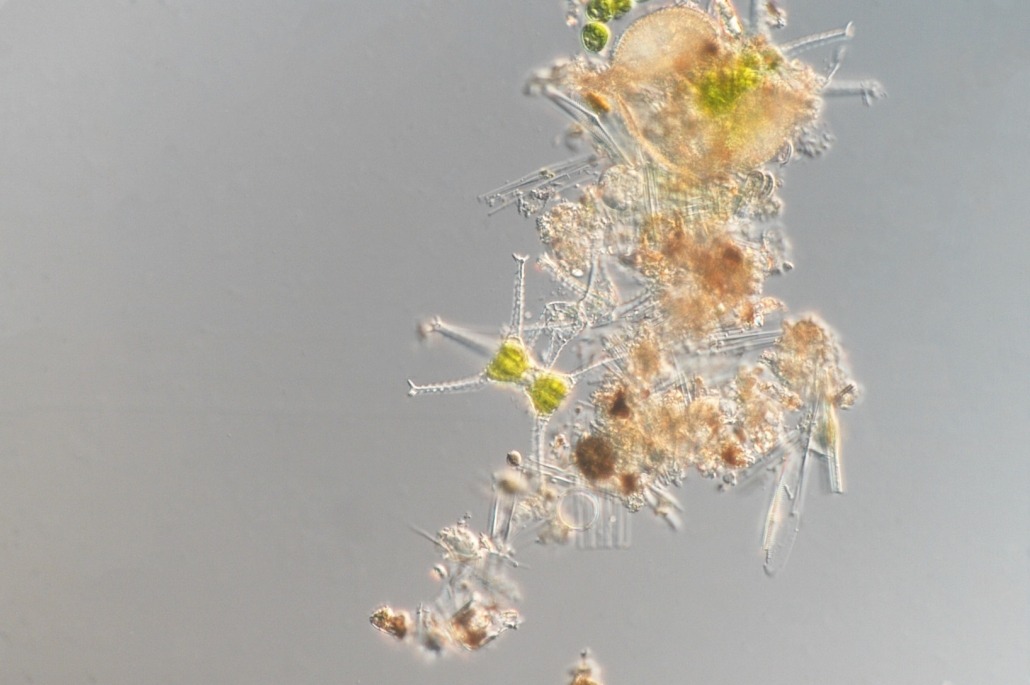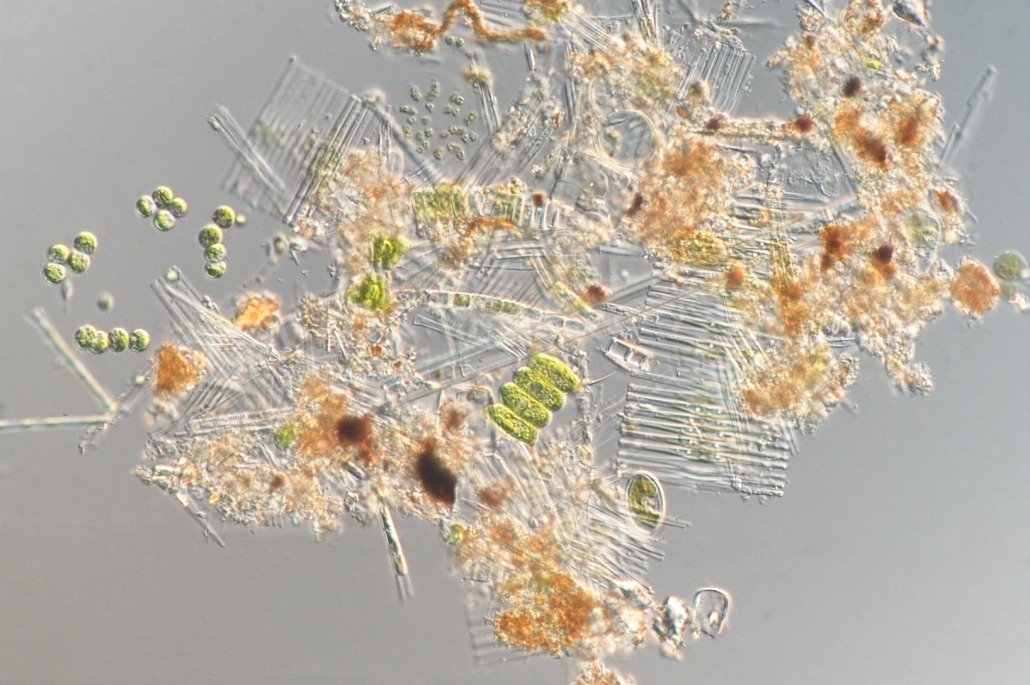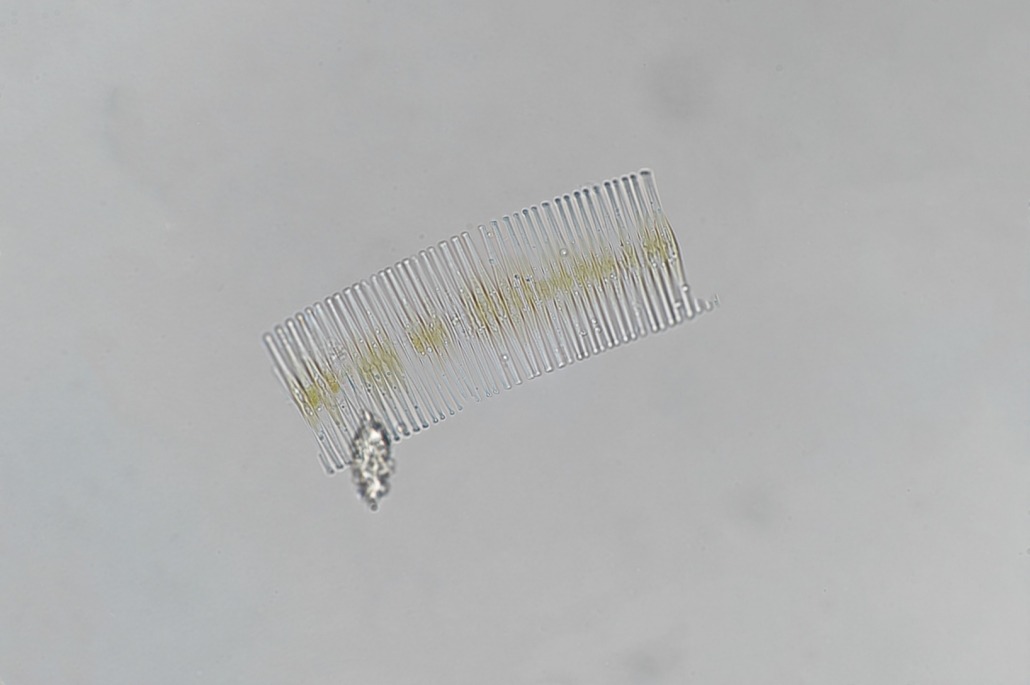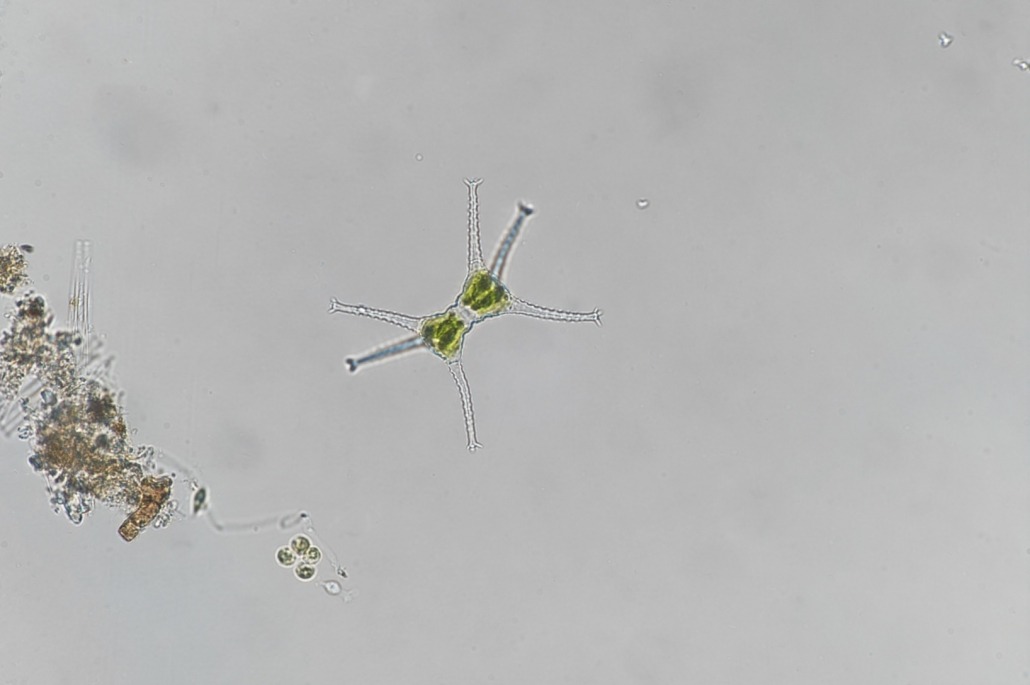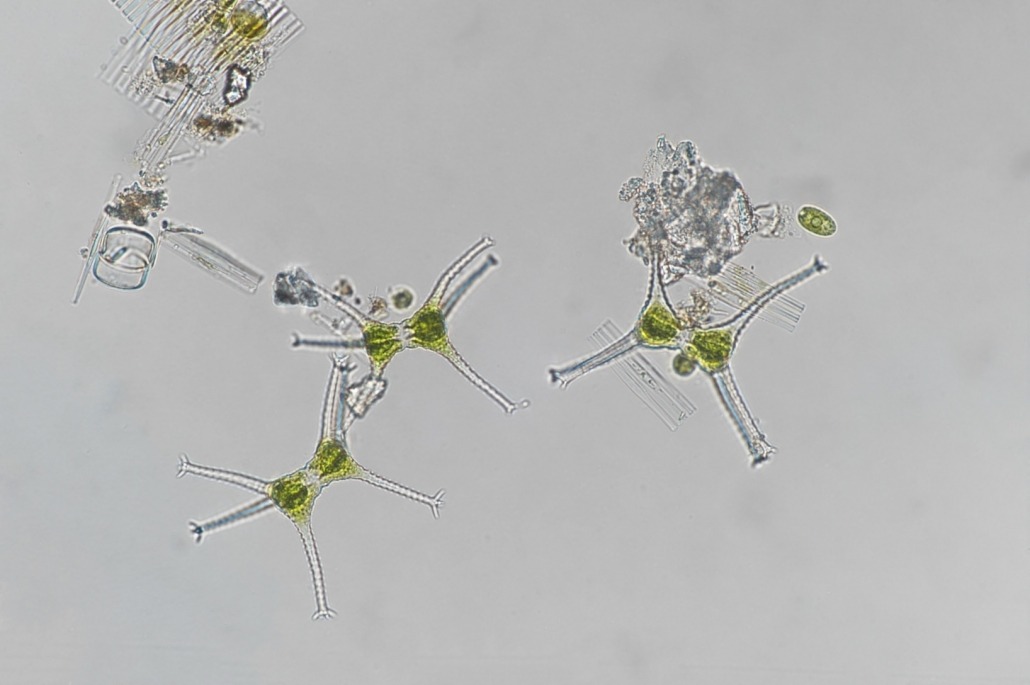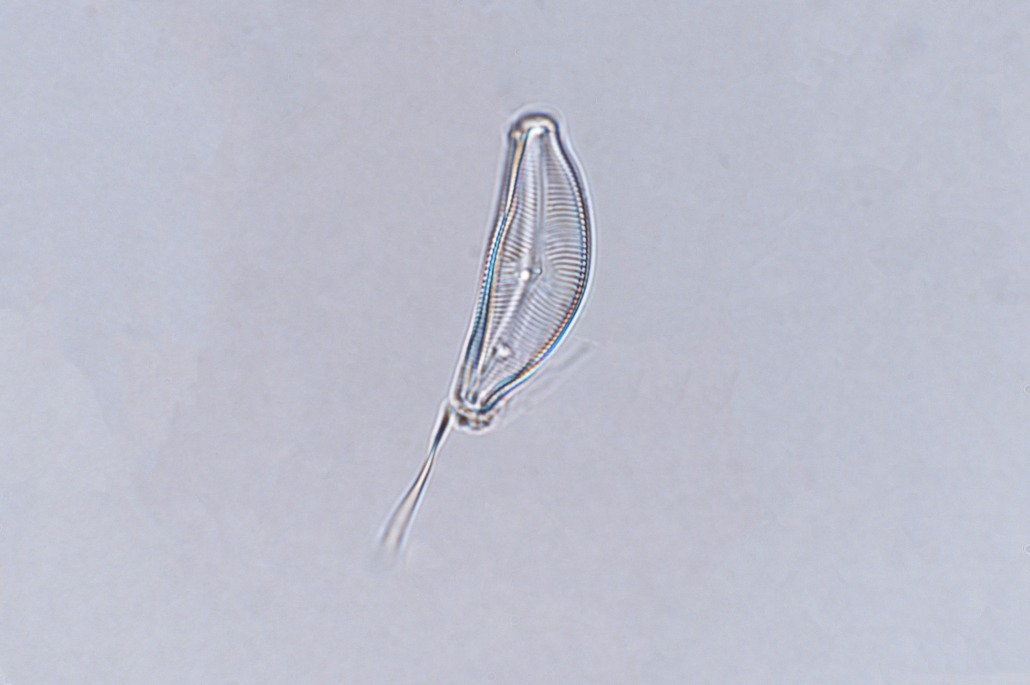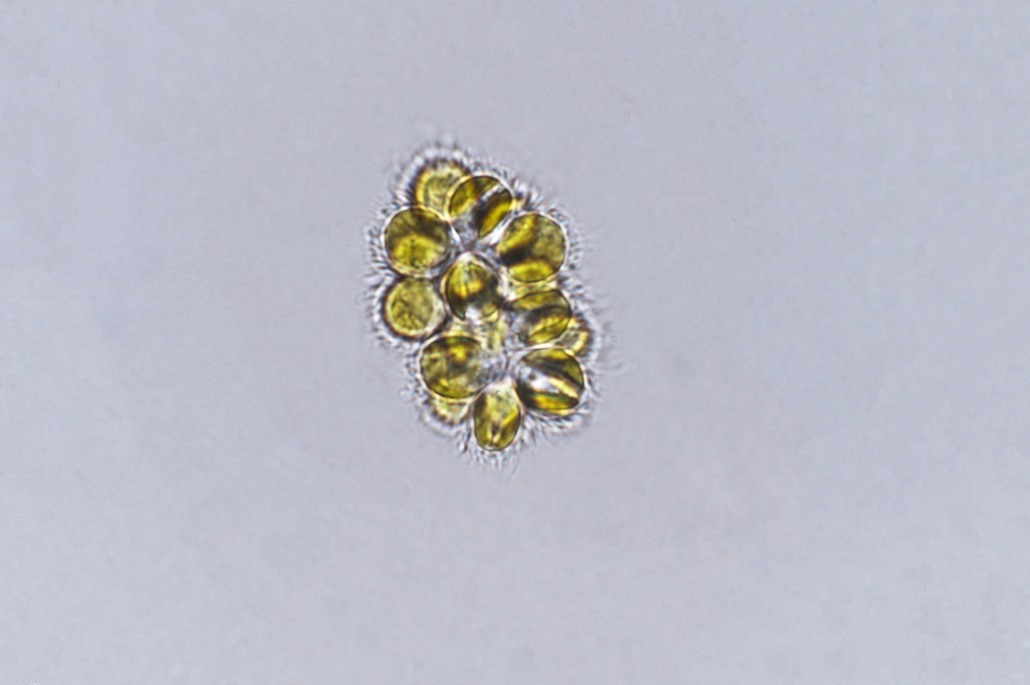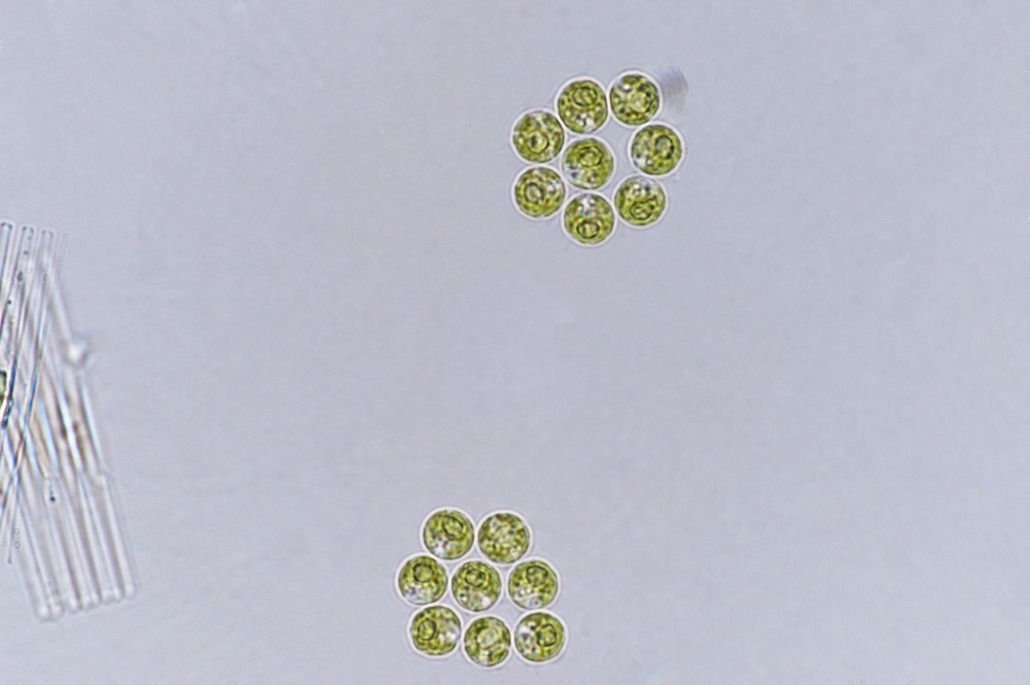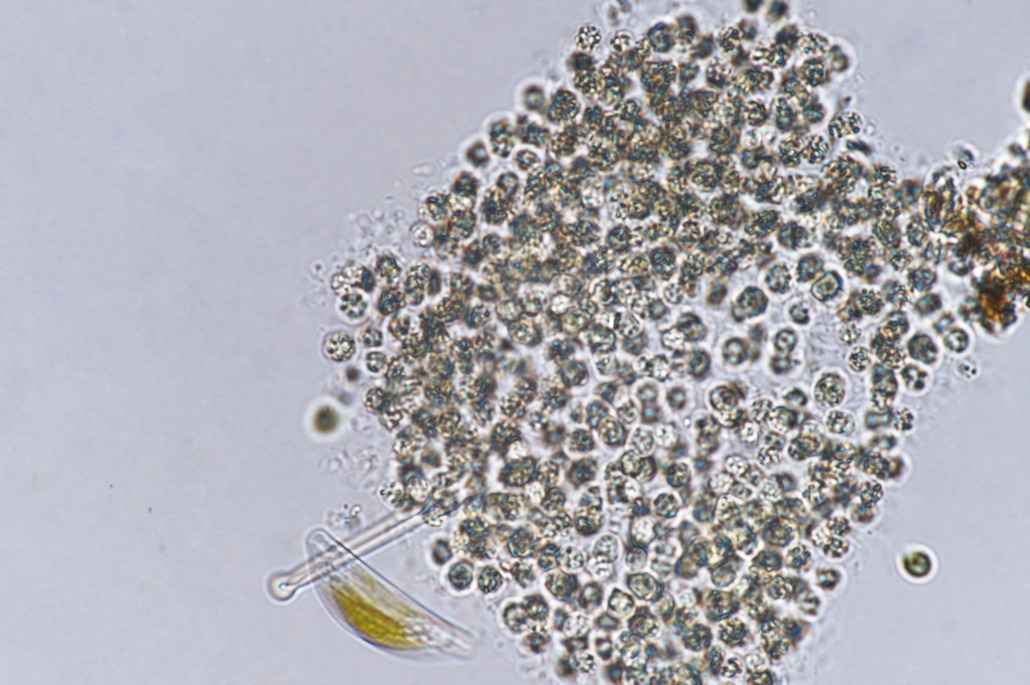Synopsis: Munda is a multimedia installation that draws attention to elements of the Mondego river that are generally not accessible to our senses. Revealing its underwater soundscapes and bringing microalgae to a visible scale, this installation aims at raising awareness of the potential impacts of increased high-frequency noise and vibration on aquatic environments on a microscopic scale. The freshwater microalgae Munda sp. recently discovered[1] in the Mondego River inspires and named this work. Munda was the Latin name for the Mondego river, which hosts most of the algae of this species and a great diversity of other microalgae. The majority of these algae are kept in the Coimbra Algotheque collection.
[1]See Amaral et al. 2020 Toward Modern Classification of Eutigmatophytes, Including the Description of Neomonodaceae Fam. Nov. and Three New Genera in Journal of Phycology, Vol. 56, Issue 3.
This work reveals Mondego River soundscapes while inquiring about what impacts anthropogenic sounds might have on the microalgae Munda sp. and other microscopic organisms. At its core, it reveals the underwater soundscapes recorded in field trips in Coimbra while exploring ultrasounds and high frequencies impacts on microalgae. Moreover, it investigates the intrinsic characteristics of the Mondego River, bringing reflections on the importance of maintaining healthy aquatic environments. It was developed for Dar a Ouvir | Paisagens Sonoras da Cidade (Give while Hear | City Soundscapes) in collaboration with Coimbra Algotheque (ACOI) at the Department of Life Sciences from Coimbra University, led by Drª Lilia Santos.
The impact of anthropogenic noise is being studied and is detrimental to communication between aquatic fauna. Eventually, it may also affect microscopic elements due to changes in vibration and particle motion. Algae are among the oldest species on Earth and are widely used as environmental bio-indicators. Various forms of pollution and stress can affect these microorganisms. Knowing the relationships between algae and anthropogenic stressors is key to improving the future management of aquatic ecosystems. What impact could increased noise has on these micro-organisms? Could vibration caused by noise pollution be damaging these elements?
Please scroll through the pictures above for fieldwork and installation preview.
For the development of MUNDA, the partnership with Algoteca de Coimbra, which supported the development of the project, was essential. Underwater soundscapes were recorded, and water samples were collected at several locations in the Mondego River. The water samples were analysed and later presented in the installation as well as their soundscapes. The sound recordings were made in the Choupalinho park, in the Choupal National Forest, and in the Açude-Ponte Coimbra.
//
- Technique / Materials: multimedia installation / acrylic, MacBook, soundcard Focusrite Scarlett 2i4, acrylic, led lights, focal lights, oxygen pumps, water from Mondego River, microalgae, aquatic plants, rocks from Mondego River, two active speakers.
- Dimensions: variable.
- Date: 2021.
- Location: Sala Sentina, São Francisco Convent, Coimbra, Portugal for the event Dar a Ouvir – Paisagens Sonoras da Cidade.
©João Duarte (photography)
©ACOI – Algoteca de Coimbra (microscopy photography)

